Everyone in the prepping world seems to have their own opinion about something.
This is especially true when it comes to firearms. I cannot tell you how many articles I have written comparing one gun or one type of ammo to another. Everyone seems to have their favorites.
One example of this is the debate between brass and steel ammunition. Both are commonly found in gun shops and online, but which one is better for preppers? Keep in mind that preppers are looking for long term solutions, not quick fixes.
In this article, we will consider the pros and cons for both brass and steel ammo in relation to its usefulness for a prepper.
Why the Debate?
Let’s just dive in and look at the most common arguments for each side.
Brass is generally going to allow a better chamber seal than a steel round. This means that you get less blowback into the receiver and chamber.
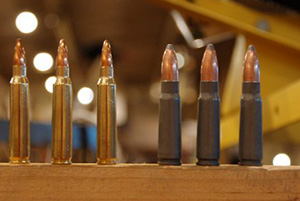
Brass bends easier than steel, so it will expand outward to create a better seal in the chamber than a rigid steel round. You will get less powder and gas moving back into the chamber, so it will stay clean longer.
Steel is a less expensive option, but with the seal being weaker it will make for a dirtier firearm. This means more time cleaning.
Debris building up in a firearm will create malfunctions making it a less reliable firearm. Is it really worth the money you save to go with steel?
Related: How Shooters Are Building Firearms with 80% Receiver Kits
Extraction Causing Ripped Brass
Most of the eastern firearms we all know and love use straight-walled cartridges that extract with a small amount of pressure.
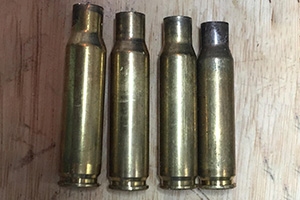
However, there are plenty of AK’s and FAL’s rebuilt for straight-walled cartridges.
If they are not adjusted properly, they can rip heads from brass casings. These Eastern guns extract with much more force, and often the brass casing cannot handle this.
In this case, steel could function better.
Typically, firearms with shorter and more aggressive extractions are going to have more problems than guns with longer cycle times. Because of this, a delayed blowback-operated gun like a FAMAS is going to have more problems with ripped brass than an AR.
In most cases brass rounds will work fine in any of these weapons. You may fire several thousand rounds before you ever notice a difference in performance between brass and steel rounds.
There has been much discussion about Eastern European countries building rifles that worked better with steel rounds because they already had a surplus of these rounds. For someone who likes to hit the range once a month, you may never notice the difference.
However, the average prepper is going to rely on their weapon for survival. This means that they expect it to fire properly every time.
Extraction Causing Jams
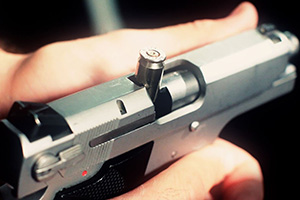 Steel may be less likely to rip in certain guns, but it is more likely to jam because of it’s strength.
Steel may be less likely to rip in certain guns, but it is more likely to jam because of it’s strength.
In addition to steel being less likely to give, the metal itself is more likely to expand and get stuck.
This could be a simple inconvenience, but for the prepper it would mean life or death.
Quality and Accuracy
Many people in the firearms community claim that steel rounds are lower quality and result in a less accurate shot.
While it may be true that the average steel round is lower quality than the average brass round, this is not by design.
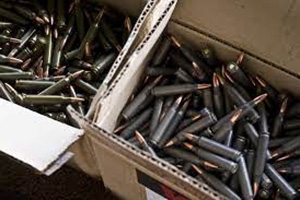
Yes, steel rounds are often marketed towards a lower price point and are therefore lower quality.
However, you can buy high quality steel rounds if you do some checking.
Related: Frugal Prepping: How to Get Cheap and Reliable Ammo For SHTF
There is absolutely no proof that brass rounds are more accurate than steel.
Cost
This one is fairly simple. Steel rounds are generally less expensive than comparable brass rounds.
In general, you will see a significant difference in price when you shop off of the shelf. This is just because most steel rounds are manufactured using less rigorous specifications so they can get to a lower price point.
Reloading
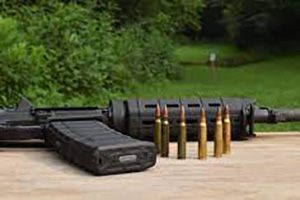
This may be the biggest factor for preppers.
Brass casing can be safely reloaded, whereas steel rounds cannot.
Between target practice, hunting, and self-defense the prepper spends a lot of money on ammunition. If this can be reduced by reloading brass casings, it is hard to ignore those savings.
Testing
I read about a recent test comparing a common brass round versus a common comparable steel round.
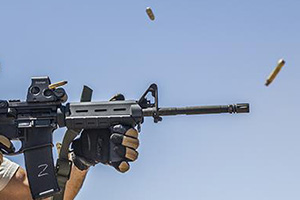
Each round type was fired 10,000 times.
While the AR-15 with brass rounds had no jams or malfunctions, the steel rounds in an AK-47 had a 99.85% success rate.
Related: The AK-47 vs AR-15: Which Rifle is Better When SHTF?
For the average shooter, this difference is so small that you probably wouldn’t notice it.
So… Which One?
As is with most things in survival, there is not a simple answer to this question.
If you plan to reload your ammunition, then brass is the way to go. That one is easy. If you do not plan to reload, you just need to weigh the benefits of each option along with your priorities.
If you fire only western weapons and a willing to pay a little more, go with brass. If you fire eastern weapons, go with steel. If you just want the cheapest option possible, steel is your best bet.
Keep in mind that you don’t have to make a permanent decision up front. Perhaps you should try out one box of each and see if you notice a difference. Do not just look at the accuracy of the shots, but also the recoil, how clean the ejection is, if the brass is torn, and if there are any jams.
Everyone can always use a little extra target practice. In this case, it may make your decision on which type of round to use quite easy.
You may also like:
 How to Build a Silencer for .308 Rifle
How to Build a Silencer for .308 Rifle
DIY Automatic Backyard Traps and Alarms Against Looters and Intruders (Video)
10 Off-Grid Water Systems You Should Have On Your Property
What Kind Of Guns Are Best Stored To Leave As An Inheritance






















I will no longer use steel cased rifle ammunition, except in an energency, because I have had the bases break off and the remainder of the case get stuck in the chamber, resulting in an expensive removal by a gunsmith. The rifles were of .556 and .308 calibers, one semi-auto and one bolt action, in good working order and clean before using.
Haven’t had an issue with the steel cased ammo it works well for target practice, but in a prepping situation you always have to go with brass!
I experimented,
i reloaded 50 steel boxer .223,
shot at 100yds, no problems,
will shoot brass in normal times.
The real issue with steel case cartridges is the Bi-metal jacket on the bullets. Check out this test.
https://www.luckygunner.com/labs/brass-vs-steel-cased-ammo/
Excellent read. Test done in a scientific manner. Thanks for sharing. Readers keep in mind though that bi-metal bullets will not be so harsh on the barrel if they aren’t shot as quickly as this test did. This test was performed with the intention to push the rifle beyond battle scenario.
Have not seen much steel used in revolvers. Seems to me that would give you the least amount of trouble. Would not bother me to use steel in those gun platforms. Any studies on Steele casings wearing out the action of semiauto weapons? Steele on Steele means one or the other is going to wear out in time
I experimented,
i reloaded 50 steel boxer .223,
shot at 100yds, no problems,
will shoot brass in normal times.
Tula sucks but poly wolf was very decent. Shot a decent group at 600 yards with a throw together 18 inch ar15.
Good thoughts all. However, there is another consideration worth knowing about. It’s the bullets themselves. Russian ammo isn’t copper jacketed. It will do unfortunate things to your rifling. Take a look at the 10K round study Lucky Gunner did. Here’s the link: https://www.luckygunner.com/labs/brass-vs-steel-cased-ammo/
Some of it is copper-jacketed. I have a box right now. I haven’t seen any of the non-copper rounds for sale in many months.
Brass – because you can’t reload steel.
Avoid steel like your life depends on it.
You can reload it
The only issue I’ve heard about steel cased ammo is its suppose to be harder on the extractor and firing pin.
All that steel to steel action wears them down faster.
Not sure if its true, I’ve got both types of ammo and the way things are now, I’ll take what I can get.
The main problem with steel casings is the lacquer from the casing building up in the chamber….at least that’s what I’ve heard and read about because I won’t shoot steel-on-steel
I am sure we can all agree that what ever you can get your hands on is the best stuff period. Who would have thought a year and a half ago that 9mm .380 etc would go for $1000.00 per 1000 rounds and the larger calibers $2.00 per round. 22 rimfire as high as $150.00 per brick. It is just crazy!! Good luck and happy hunting all in the same boat!!
If I fire steel in my rifle it voids my warranty. You might want to check yours. I guess in a EOTWAWKI event it doesn’t matter though.
I bought 1k rounds of reloaded SWC .357 once. It was all loaded in chrome/steel cases. It was the absolute dirtiest ammo I’ve ever fired. I thought all along it was the lead bullets. After reading this article I’m wondering if it was the cases.
I don’t reload so I can’t speak from experience but I’ve been told the chrome cases will split if you try to reload them.
I try to buy only brass cases.
Chrome over steel? Are you sure it wasn’t chrome over brass. There is alot of that around.
Spike: Premium U.S. ammo is nickel plated, not chrome over brass. To the best of my knowledge, chrome is generally used on ComBlock ammo and it is chrome over steel. See my comments to Mailbag next.
Nickel is more corrosion resistant than brass. You don’t see it as much these days but back when cops wore their ammo in ammo loops on their duty belts, the belts would absorb sweat and that would create some kind of reaction between brass cases and the leather which would turn both green with some kind of corrosion. Cops and others who wore leather duty belts (way before Kydex) had to empty the ammo loops and clean them and the brass cartridges that they held so that they didn’t have a highly embarrassing moment while engaged in a shootout with some bad guys
Thanks for straightening me out LLC. I knew it was nickel but was having a brain fart thinking chrome.
Spike,
No I’m not sure…I really don’t know what it was just that it was shiny like chrome…it very well could have been chrome /brass or nickel plated brass like LCC said.
It was all once fired factory reloads of Speer, S&W, Fed, RP, WW, Super Vel & Frontier cases. Probably a big mistake on my part. I was just getting into to the handgun thing…live and learn I guess. That was a long time ago.
Mailpouch: There is a difference between nickel plated brass cases and chrome plated steel cases. Nickel plated brass cases are usually premium ammunition and are preferred by those folks who depend upon their firearms daily for self-defense such as bodyguards and police officers. Chrome plated steel cases are ComBloc ammo and probably are Berdan primed and even if Boxer primed, with steel cases, sure to be hard on your dies. That can be solved by using case lube when resizing. Berdan is a bitch to deprime which is why most reloaders ditch Berdan primed steel cases. EOTW reloading steel cased Berdan may become like eating possum. You hate it but its better than the alternative.
Nickel plated cases do not corrode as do brass. Have you ever carried brass cases in a gun belt for a couple of months? A gunbelt that got damp with sweat after chasing someone who really really didn’t want to talk to a cop today? Worn a gunbelt in Mississippi in July in a patrol unit without a/c? Or in CA during the summer where despite what they say about it’s low humidity, so it doesn’t bother you as much as high humidity. That may be true but when the thermometer outside BofA says that it is 108° F. I don’t care whether it is dry or not, it still is damned hot and your duty belt closes off any air that might get into your clothing to cool you off. Under those circumstances, back in the days when cops carried ammo in belt loops for their revolvers, the cop needed to take the ammo out weekly and wipe it down, otherwise when he was grabbing ammo in a touch and go situation, he might find that the ammo had grown a thick layer of green and wouldn’t fit in the chambers of his sidearm. Also the ammo loops on his belt had grown a nasty layer of green slime and looked groody and gross. Nickel plating helped hold down the growth of green slime.
That said, there are some anecdotal rumors that the hard nickel plating on ammo is hard on reloading dies. I have never heard just how many resizings the die must have done in order to experience wear but it always seemed to me if I were reloading nickel plated cases in any significant quantity I would protect my carbide dies with case lube just as I would with the old steel dies.
According to the folks who claim to have studied such things, chambers in ComBloc firearms are generous as is leade. Chambers in U.S. firearms have to meet SAMMI specs to be marketable. SAMMI specs are generally for civilian firearms generally not fired while in mooky fighting holes half-filled with water with ammo that has recently be lying in the mud or conversely, fighting from a fighting hole half filled with dry dust and sand with ammo that has been lying in the hot desert sun for the last two hours. Even U.S. military firearms follow SAMMI specs and are have generally tighter chambers and shorter leade than ComBlock firearms.
All military cases are not built for reloading. On U.S. military firing ranges the brass was collected to be sold to resellers who sold the brass in various stages of reloading to reloaders.
In Combloc countries the steel cases if collected were sold for scrap steel to be melted down and recast as more steel cases.
In both cases, the needs of the reloader were of either very little significance or totally ignored all together.
If I saw nickel coated .38 Sp. or .357 mag at a decent price I would gobble it up as much as I could afford or even perhaps a tad more than I could afford. I wouldn’t turn my nose up at it because it was nickel coated. I might mention that I would do the same for any nickel coated ammo in a caliber that I could use.
Left Ciast Cluck,
I’m not a weapons or ammo expert so I didn’t know there was chrome and nickel cases. I didn’t ask what the bulk ammo was that I bought. I just knew it was shiny & bright. It was probably the absolute worst ammo I’ve ever bought….but then the revolver I was shooting was a lemon too…Model 28 S&W..
6″ barrel that I had a target hammer, trigger and grips on. Im a S&W fan but never could hit anything with that gun even with premium ammo so it was replaced with a 6″ barrel Ruger GP100…no problems.
Nope…never been in Mississippi or California in the summer time…I have been in Alabama, Louisiana and Oklahoma in the summer. It sometimes very miserable there too. When a wet bulb is declared at Ft Polk pants are unbloused and shirts are untucked and sleeves are rolled up.
All the weapons I fired in the military was with ammo that had brass cases. Never saw any nickel or chrome ammo cases. I’m sure the military in its infinite wisdom had a good reason for that.
I’ve never been a LEO…never had the desire to be one either…I’ll leave that job to the ones who like being in a position of authority and like to be in charge.
Well Said!
In my experience in the action shooting sports, I seen more malfunctions from steel case ammunition than brass. That includes at least 3 guns blown up although it may well have been the shooters fault for using that damn forward assist to jam a full case in over the neck that was ripped off of the previous case (very distressing both to the shooter and the RO…).
Personally, I’ve been fortunate to never had a problem using handloads in brass cases… That is speaking only to malfunctions caused by the ammunition and not due to a bad magazine or dirt from rolling around in the dirt during the course of fire.
With respect to accuracy, my handloads will outshoot any factory ammo I’ve tried. Sometimes its not by much, but obvious at distance. This is the expected outcome as the loads are tailored to a particular firearm.
One of the problems with buying reloads at gun shows is that you don’t know the skill level of the reloader. From the description of the mixture of manufacturers of the cases, it sounds like range pick-ups that some guy reloaded in his basement. No knowledge whatsoever of the powder used, the load data, how well the cases were resized, how well the crimp was applied to the case mouth. I would say the problem was not the nickel plated cases but the powder that was put in them and how accurately the powder charge was measured. Plus how carefully the resizing and other case prep was done.
I will buy reloads from a known source but I have already been there and done that with reloads from an unknown source and I am strongly disinclined to repeat that sad experience, Priced cheaply enough, I would buy reloads from an unknown source to pull the bullets, resize the brass, load it with a known quantity of a powder that I know works in that caliber of firearm with that weight bullet, but am firmly resolved not to repeat my experience with shooting reloads from an unknown source.
I can only speak from my limited personal experience. I tried Tula .45 steel-case ammunition in my Remington 1911. I had a stove-pipe malfunction every second or third round. I have had no malfunctions with any of several brands of brass-case ammunition. I would say to try a box and see how your individual firearm likes it. As far as steel-case being dirtier, isn’t it good practice to clean your weapon after every use?
Worked as an assistant gunsmith at a friend’s gun shop for several years. The biggest problem I have seen with steel cases is one of being “glued ” in the chamber, this is often caused by the protective coating on the outside. Most of these coatings are of the lacquer type which tend to melt in the chamber causing a slow build up of sticky residue which causes the case to “glue ” themselves in, when this happens you not only have to remove the case but also the “glue ” that held the case in. This is a real pain as this requires some Acetone or similar solvent to remove the remaining substance after the case is removed, and or the chamber will need to be reamed to be sure any and all residue is removed. Steel case coating can also pick up dirt or grit causing other problems. I personally will not shoot steel or aluminum (because of dirt and grit) problems.
PS. Some smiths will often use heat to help get the case out.